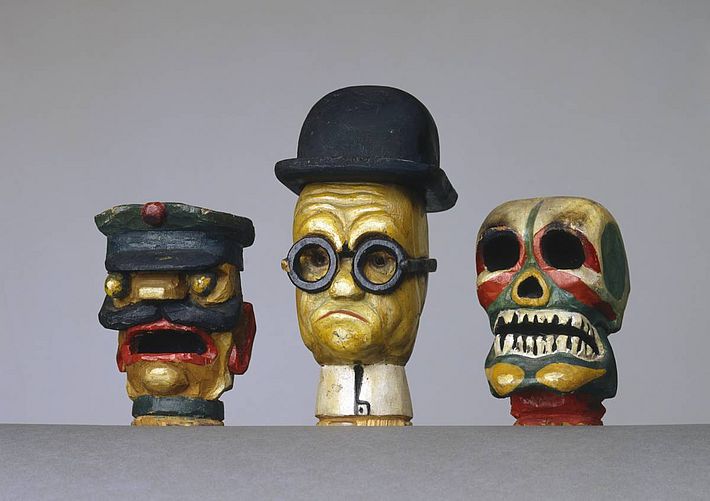Hand-Puppet Heads
Karl Peter Röhl, 1920
Röhl’s hand-carved and painted hand-puppet heads illustrate the work of the Bauhaus’s stage workshop and combine elements of naïve art and peasant traditions with Expressionist influences.

[Translate to English:] Text
Karl Peter Röhl was among the most important student personalities in the early Bauhaus. He won the competition for the first Bauhaus Signet in 1919. Theo van Doesburg’s famous De Stijl course, which led to the reorientation of the Bauhaus as a modern design college, was held in Röhl’s studio in 1922. Röhl’s puppet heads illustrate the work of the Bauhaus’s stage workshop. Theatre, music, dance and performances were part of the life and work of the Bauhaus from the very start. They were all elements in the universal approach to education at the Bauhaus, which was aimed at developing all of the students’ talents. Röhl’s hand-carved and painted hand-puppet heads combine elements of naïve art and peasant traditions with Expressionist influences. Between 1916 and 1925, Paul Klee created comparable hand puppets with plaster heads, andGerhard Marcks was making puppets from wood around 1920. Also in connection with puppet theatre, Eberhard Schrammen made six lathe-turned stick puppets and Kurt Schmidt and Toni Hergt contributed numerous marionettes for the puppet play „Die Abenteuer des kleinen Buckligen“ (The Adventures of Little Hunchback) in 1923.
[AG 2015]
- Literature:
- Siebenbrodt, Michael & Constanze Hofstaetter (1997): Karl Peter Röhl in Weimar 1912–1926, Weimar.